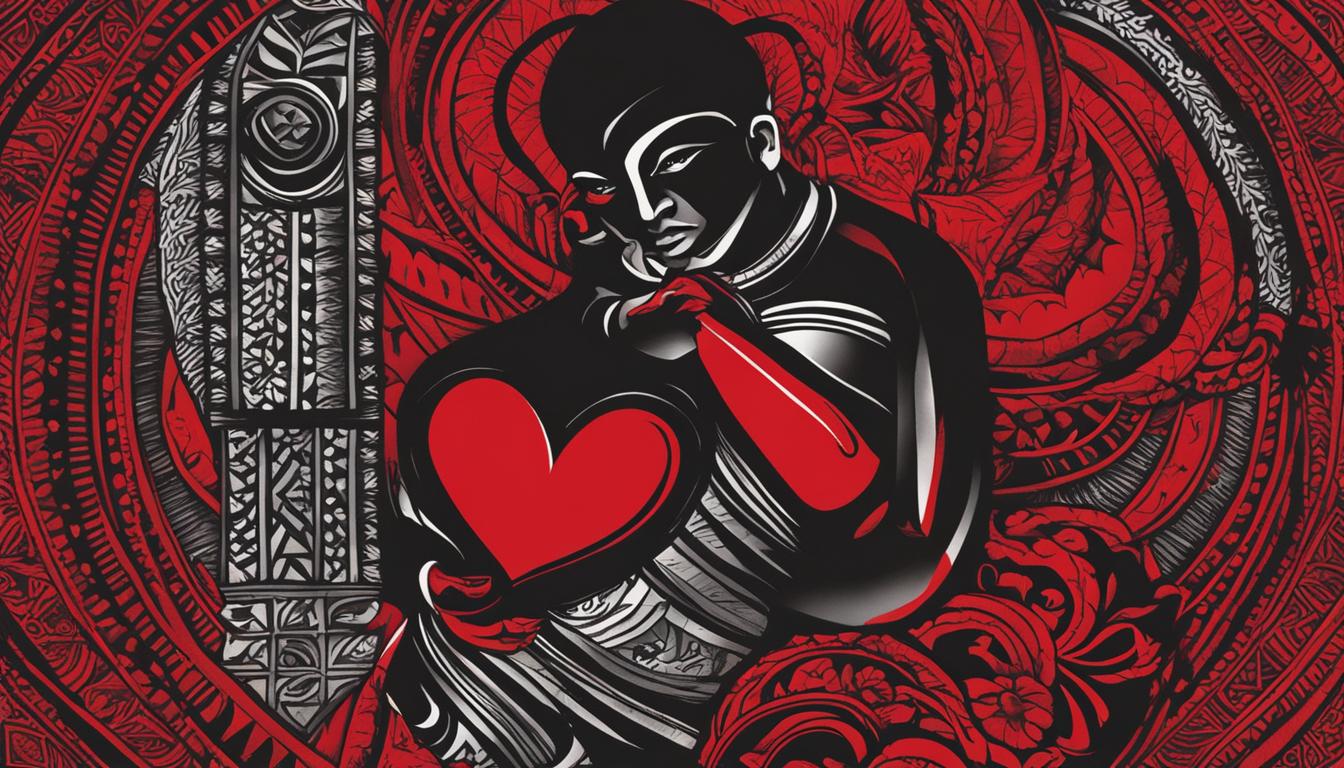If you’re looking for a poignant and insightful book about South African culture, “The Heart of Redness” by Zakes Mda should be at the top of your reading list. This novel explores the richness of Xhosa culture, while also addressing themes such as tradition, modernity, and spirituality. In this article, we will provide a book summary of “The Heart of Redness,” exploring the historical and cultural context in which it is set, analyzing the characters and themes, and discussing its narrative structure and writing style. We’ll also examine the critical reception and cultural impact of the book and reflect on its broader significance for South Africa and beyond.
Overview of “The Heart of Redness”
In “The Heart of Redness,” Zakes Mda tells the story of two warring villages in post-apartheid South Africa. The novel is set in the Eastern Cape region and explores the cultural and historical significance of the Xhosa people. The plot centers around Camagu, a man who returns to his ancestral village and becomes embroiled in the ongoing conflict between the pro- and anti-renewal factions.
The central conflict in the novel revolves around the proposed construction of a lucrative tourist resort called “The Baths.” While some villagers see this as an opportunity for development and financial gain, others fear the loss of their traditional way of life and the destruction of their sacred cultural heritage.
There are several key characters in the novel, including Camagu, his love interest, the historian and researcher Timi, and the antagonist Mfaz’omnyama.
Themes of tradition versus modernity, spirituality, and cultural identity are explored throughout the novel. Zakes Mda employs various narrative techniques such as multiple perspectives and flashbacks to further enhance the plot and character development.
“The Heart of Redness” has received critical acclaim and won several literary awards, including the 2001 Commonwealth Writers’ Prize. The novel offers insights into post-apartheid South Africa and the ongoing struggle to reconcile tradition with modernity.
Setting and Historical Background
The Heart of Redness by Zakes Mda is set in the Eastern Cape region of South Africa, a place with a rich history and cultural significance. This region was once the home of the Xhosa people, one of the largest ethnic groups in South Africa, who played a significant role in the story.
During the 19th century, the region experienced a period of turmoil known as the Xhosa Wars, characterized by clashes between the Xhosa people and the British colonizers. These events influenced the culture and traditions of the Xhosa people and had a lasting impact on the region.
The story takes place in the fictional village of Qolorha, which is based on a real village called Qolorha-by-Sea. This area is known for its stunning natural beauty, with vast beaches and rolling hills.
Xhosa culture and traditions
The Xhosa people have a rich and diverse culture, with unique traditions and practices that have been passed down through generations. One of the most famous rituals is the male initiation ceremony, which involves the circumcision of young men as they transition into adulthood. This practice is explored in-depth in “The Heart of Redness.”
The book also delves into the role of women in Xhosa culture, with a particular focus on the character of Camagu. She is a strong female figure who challenges traditional gender roles and serves as a symbol of resistance against patriarchy.
The landscape as a character
One of the most remarkable elements of “The Heart of Redness” is the way in which the landscape is portrayed as a character in its own right. The rolling hills, vast beaches, and rugged terrain play a vital role in the story and reflect the struggles of the Xhosa people as they try to retain their cultural identity in the face of colonialism.
“In the green hills of the homeland, writers found something that filled a gap in all English-language literature. When they wrote, they found that they could write in larger letters, and bolder, than they had ever thought possible elsewhere.”
Characters in “The Heart of Redness”
In “The Heart of Redness,” Zakes Mda masterfully crafts complex characters that reflect the intricate web of social and political tensions present in the post-apartheid South African landscape.
| Character | Role | Characteristics |
|---|---|---|
| Camagu | Protagonist | Charismatic, idealistic, driven by cultural heritage and ancestral traditions |
| Mfundo | Protagonist | Young and naive, torn between his Western education and African roots |
| Nonceba | Antagonist | Manipulative, cunning, represents the corrupt side of post-apartheid politics |
| Maureen | Antagonist | Arrogant, racist, embodies the lingering effects of colonialism and white supremacy |
| Andile | Supporting Character | Charismatic, progressive, represents the intellectual and political forces of change |
The characters in “The Heart of Redness” are not merely plot devices, but rather, they embody the various cultural and political forces at play in post-apartheid South Africa. Camagu and Mfundo, the two protagonists, represent the struggle between modernity and tradition, and how cultural heritage shapes individual identity and consciousness. Nonceba and Maureen, the antagonists, represent the corrupt and oppressive nature of post-apartheid politics, and the continued impact of racism and colonialism on South African society.
“The characters in ‘The Heart of Redness’ are flesh and blood human beings whose struggles, triumphs, and failures reflect the complexities of South African society. Mda masterfully weaves together the various threads of the narrative to create a rich tapestry of characters that readers will not soon forget.”
Themes and Symbolism
As “The Heart of Redness” explores the complexities of South African culture, it also delves into various themes and symbolism that add depth to the narrative. One of the most significant themes is cultural identity, which is exemplified through the main characters as they grapple with their heritage and the pressures of modern society. Additionally, the novel explores spirituality and the role of traditional beliefs in contemporary life. The clash between tradition and modernity is also a prominent theme, as characters struggle to navigate societal expectations and their personal desires.
The book is rich in symbolism, particularly in its use of the color red, which represents both danger and passion. The titular “heart of redness” is a powerful symbol of the Xhosa people’s connection to their land and history, as well as their fierce resistance against colonization and oppression. Water is another important symbol, representing renewal and cleansing, as well as the fluidity of identity and culture.
“‘The river is one of the sources of our being. It is the source of our spirituality. It is our heart of redness.'”

Symbolism Table
| Symbol | Meaning |
|---|---|
| Red | Danger, passion, resistance, history |
| Heart of Redness | Connection to land and heritage |
| Water | Renewal, cleansing, fluidity of identity and culture |
Narrative Structure and Writing Style
Zakes Mda’s narrative techniques and writing style in “The Heart of Redness” contribute significantly to the novel’s overall storytelling. The book’s non-linear narrative includes flashbacks and multiple perspectives, allowing the story to unfold gradually and progressively.
The use of flashbacks serves to highlight the historical significance of the Xhosa people and their role in the events of the novel, while the multiple perspectives provide the reader with a well-rounded understanding of the characters and their motivations.
Mda’s writing style is engaging and descriptive, with vivid imagery that immerses the reader in the setting of the Eastern Cape. The author’s attention to detail, particularly in his depiction of nature and the environment, is evident throughout the book.
“The vividness and the descriptive richness of the book’s landscape descriptions are remarkable.” – Gloria Chuku, African Studies Review
Furthermore, Mda’s use of symbolism adds depth and complexity to the novel’s themes, particularly in his exploration of the clash between tradition and modernity in South African culture.
Overall, Mda’s narrative techniques and writing style make “The Heart of Redness” an engaging and thought-provoking read that explores important themes while keeping the reader entranced in an intriguing story.
Reception and Impact
“The Heart of Redness” has been widely acclaimed for its insightful portrayal of South African culture and identity. The book has received numerous literary awards, including the Sunday Times Fiction Prize and the Commonwealth Writers’ Prize for Best Book in Africa. Its critical reception has been overwhelmingly positive, with reviewers praising Zakes Mda’s powerful storytelling and vivid imagery.
The cultural impact of “The Heart of Redness” cannot be overstated. The novel delves into the complexities of post-apartheid South Africa and raises important questions about cultural identity and tradition. It has become a cornerstone of South African literature and a must-read for anyone interested in understanding the country’s history and culture.
Cultural Significance and Reflections
“The Heart of Redness” by Zakes Mda carries immense cultural significance and offers invaluable social commentary on post-apartheid South Africa. The novel highlights the complexities of South African culture and the various challenges faced by its people.
Throughout the book, Mda explores the intricate relationships between different groups in South African society, and the impact of the country’s political and social history on cultural identity. The themes of tradition versus modernity and spirituality versus materialism become a metaphor for South Africa’s ongoing cultural evolution.
Mda’s work also offers a sharp critique of the post-apartheid era, exploring the ways in which inequality and injustice persist despite significant political change. He challengingly portrays the issue of land ownership in post-apartheid South Africa, with the tensions of the past still present and felt in contemporary society.
The novel’s cultural significance cannot be understated – Mda’s masterful storytelling has made a significant cultural impact on South African literature. It offers readers a window into the complexities of African culture, tradition, and identity that is both informative and thought-provoking.
“The Heart of Redness” is truly a groundbreaking work of literature, with its painstaking detail, complex narrative structure, and vivid characters. It is a must-read for anyone interested in the rich and diverse cultural heritage of post-apartheid South Africa and the complexities of its society.”
Conclusion
In conclusion, “The Heart of Redness” by Zakes Mda is a captivating novel that offers insight into South African culture and identity. The story explores themes of tradition and modernity, spirituality, and the clash between different cultures and beliefs. The characters are well-developed and relatable, and the writing style is engaging and thought-provoking.
Overall, “The Heart of Redness” is a must-read for anyone interested in South African literature and culture. It offers a unique perspective on the country’s history and its struggles with identity in a post-apartheid world. The book’s critical reception and cultural impact are a testament to its significance, and it has rightfully earned its place as a classic of South African literature.
This book summary conclusion serves as a reminder of the importance of understanding different cultures and the role that literature can play in promoting cultural awareness and appreciation. “The Heart of Redness” is a shining example of how literature can offer valuable insights into the complexities of our world.



